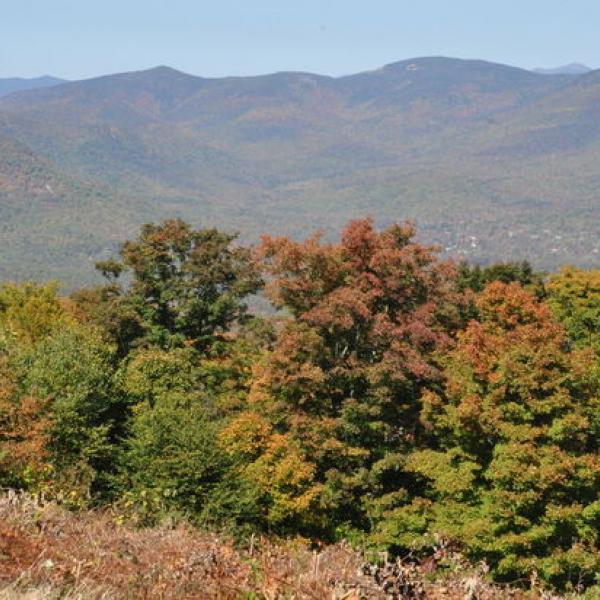
News Source
There are five challenges that are inhibiting our forests' ability to regenerate successfully and remain a productive land use and a healthy ecosystem: Invasive species, deer, fragmentation, habitat diversity and private owner stewardship.
Invasive species have been a problem for several hundred years, and remain a problem today. Invasive species have already had huge impacts on New York’s forests; they are responsible for the loss of chestnut and elm trees. Both ash trees and hemlock trees are currently under serious threat in New York from the emerald ash borer and hemlock wooly adelgid, respectively. Both ash and hemlock are staples of New York forestland, and both of the invasives targeting these species are currently present in Cayuga County. The broad result is that we lose crucial native species that benefit forest productivity and also provide habitat for our native wildlife.
Deer populations have been rising across New York state, and the increased number has had a big impact on forests. Deer browsing means that desirable species, such as maple, have trouble regenerating to the point where they are entirely removed from a forest stand. Impact of deer depends on various factors, from herd size to availability of food sources outside the forest. Protecting areas with fencing can be quite expensive, and is only realistic on relatively small parcels. Deer are also a very polarized issue, as some see them as nature and wildlife, and others see them as threatening the very ecosystems we enjoy.
Privately owned properties are susceptible to change, and our open-space forests can suffer from being converted to residential development. Not only does dividing forestland mean you will have less forest, but it can also have a negative impact on the forested ecosystems that remain. Local municipalities and landowners should pursue growth that preserves and protects open spaces. By recognizing the benefits that forested areas provide our communities, we can justify land protection.
How forests are managed greatly influences the habitat diversity. Different cutting methods, different responses to challenges and different management agendas can all bring about different ecologies in otherwise similar systems. When a field that was either clear-cut or abandoned farmland begins to grow a forest, the seedlings and saplings provide a unique "successional" habitat. Thus, while the general public gets nervous about the drastic visual changes imposed by processes such as clear-cutting, it is actually important to ensure that some landscapes are harvested in such a manner, and allowing for this early successional habitat to exist. This is one benefit of having so many forest owners with different management plans: It ensures a diverse range of forest habitat. And these successional habitats are crucial because they disappear (they grow into older forests!), and since less farm fields are being abandoned these days, they are not being replaced at the rate they once were.
The last big challenge facing forests today influences all the others that we discussed. Last week, we learned that most of New York’s forests are in the hands of private landowners. This has some interesting impacts on our forestland, but it also poses some challenges. First, subdividing land increases the parceling off of forest land. Second, the average age of current owners is rising, which leaves questions about the future stewardship; will the new owners subdivide properties? Will they maintain the same level of care? Lastly, forest owners provide many public benefits, with little compensation. Forests provide us with clean air and water, wildlife with habitat and natural areas to enjoy. In return for the work to maintain a healthy forest, there is little financial incentive.
Overall, our New York state forests have been resurging from their poor condition a hundred years ago. But if we want to continue to strengthen the forestland across our state, we need to acknowledge the challenges that are facing forests today, and as communities come up with creative ways to solve them.